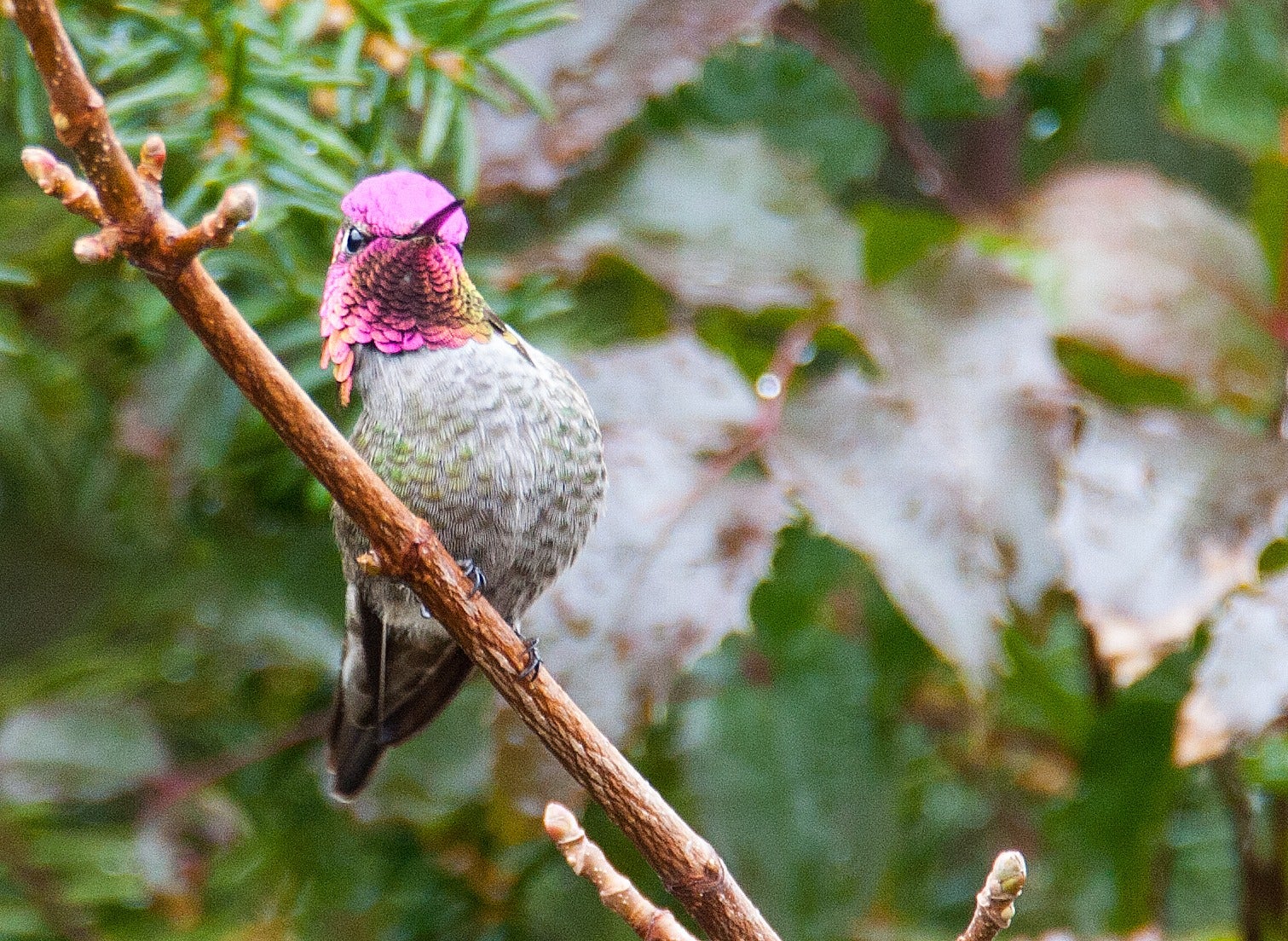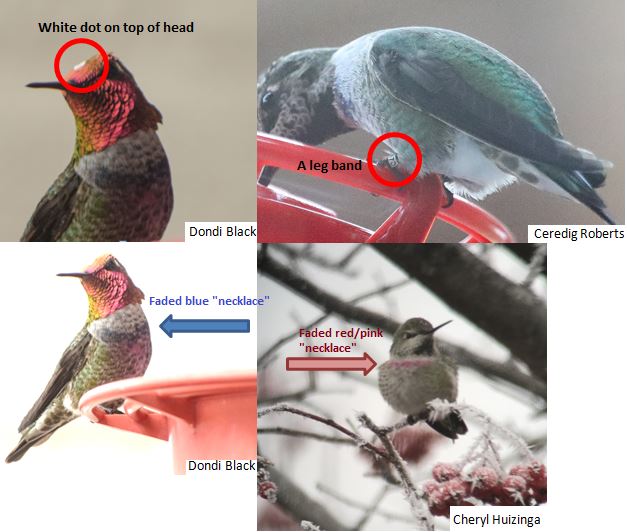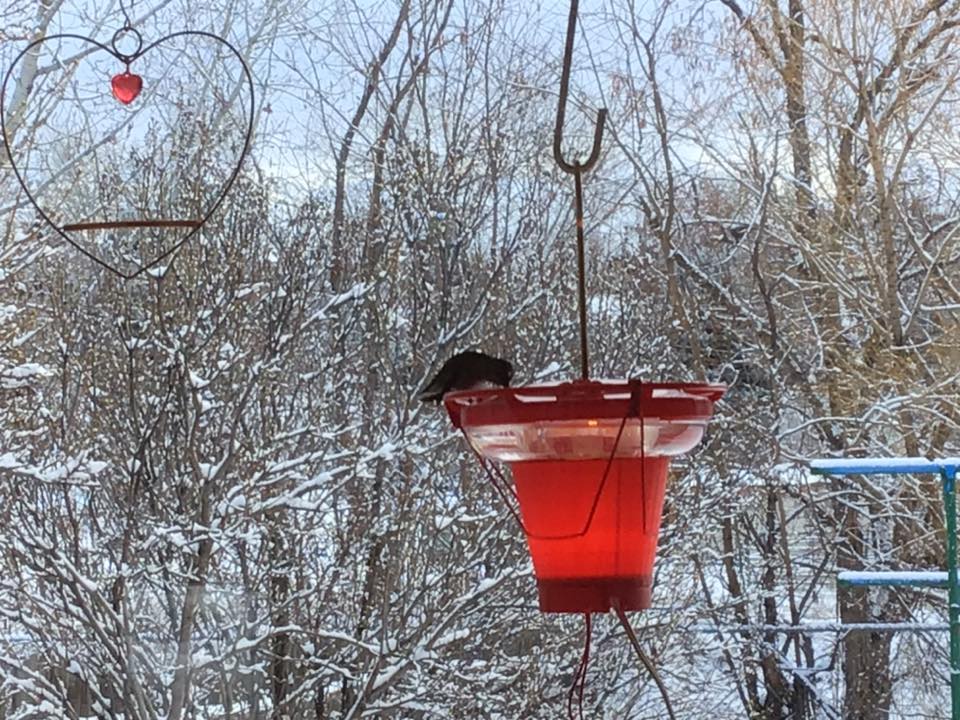By Jessica Pollock

Winter and the cold temperatures are here, but that doesn’t mean you have to put your hummingbird feeder away! Here in Idaho we have been noticing an increase in the presence of a winter hummingbird visitor – the Anna’s Hummingbird.
The Anna’s Hummingbird is perhaps the most robust of the North American hummingbirds.
They apparently can withstand colder temperatures on a regular basis, increasing their range into (not away from!) colder regions, and increased survival by ingesting a higher amount of insects and arachnids than is typical. We’ve been monitoring this range expansion into Idaho since 2015 through banding and color marking individual Anna’s hummingbirds – keep your eyes out for a bird with a white dot on it’s head or a colored “necklace” across its chest. If you see one, please let us know!

Through banding, we’ve been surprised to learn the thermal extremes these “flying gems” can survive! In the winter of 2018, we banded an adult male Anna’s Hummingbird near New Meadows and within a 100 day span, there were 45 days where both the low and high never reached above freezing. And in fact, some lows were as cold as -10°F! This hummingbird survived, seemingly healthy and active, and stayed almost the entire winter before presumably migrating to his spring breeding grounds. In November, 2019 we banded the first ever Anna’s Hummingbird in the Wood River Valley (in Hailey at 5,300 feet elevation!), and we look forward to banding more and learning about their abilities to survive in cold, mountainous climates.

If you’re one of the lucky ones to have a winter hummingbird visitor, consider purchasing a heated feeder so the nectar stays thawed day and night.
Pre-dawn is the most critical time for hummingbirds to eat and refuel after fasting all night long.
Having a thawed nectar source available 30 minutes before sunrise is critical, so if you prefer not to wake up that early to swap feeders (can’t blame you!), then purchasing a heated feeder is the way to go. They are available online and in many bird feeder supply stores. Our supplementary feeding is likely supporting the winter expansion of the Anna’s Hummingbird into Idaho, so the role that humans play in a species range expansion is an intriguing one worth considering and discussing! What are your thoughts on the subject? We want to track this growth and expansion into Idaho, so if you observe any hummingbirds in your yard between November-March, please let us know using this google form.
This article is part of our 2019 end of the year newsletter! View the full newsletter here, or click “older posts” below to read the next article.